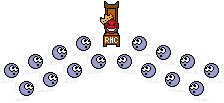Re: What questions should I ask/or things I should demand?
The fewer coats of material, the better. There is no reason to add extra coats once hiding is achieved, it in fact makes the paint MUCH easier to chip. Every refinish class I've been to says no more than 12 mils is acceptable. That's 12/1000 of an inch. Most OE cars leave the plant with around 8-9 mils (includes sealers, basecoat, clear, and chipguard). One refinish without priming puts you at the limit.
Paint brand isn't nearly as big a deal as the type and the fact that it's from a quality line.
A lot depends on (realistic) expectations and projected use. Single-stage urethane is OK if the car is garaged and kept polished and waxed. It will, however fade/chalk if exposed to the elements day in day out over several years. It is cheaper than base/clear, however.
Base/clear when properly prepped and applied is probably the most stable/best choice for a daily driver car. It is more expensive than single-stage
There are other choices..lacquer, enamel, catalyzed enamel...none of which are wasting the effort on in this day and age.
Lacquer, besides being harder and harder to get, is not a stable finish. It ws the original paint on most GM cars for years...you know, the ones that have all the tiny cracks in them. In extreme cases, they have been known to look like a flagstone walk.
Enamel...all the downside of single-stage, plus the added treat that it's not very forgiving of anything less than a painter's best effort/attention. Catalyzed enamel is only slightly better....but it does chip more easily.
Here's the biggest problem....finding a shop/someone who knows what the hell they're doing that will entertain working on a 30 year old car. Ours won't, and some of the reasons are: Few people are willing to spend the money/time required to do it right. In all reality, if it's a 30 year old car, the paint on it now needs to come off if you expect a first-rate result. Nobody I know in the business will warrant paint performance when applied over original paint, unknown refinish paint, unknown prior repairs, unknown "all I need is for you to shoot it, it's all ready to paint" workmanship/materials.
Beware the guy that will paint it cheap, and wants a deposit. There are horror stories all over automotive forums about this scenario. In reality, if he's in the business, he should be able to swing the materials in the following plan.
Upon acceptance of the written agreement that will specify the exact procedures to be done, he takes the car. After the work has been started and progressed to a selected point (i usually reccommend after stripping and etch/epoxy prime) payment is made for the time/materials billed to that point. This way, you pay for work done, and he is good on expenses to that point, pretty much clearing the slate. Here's why.....the shop owner doesn't want your car. He wants to be paid for what he's done, and you certainly have every expectation that the work paid for has been done. Many times people dump WAAAAY more into a car than a shop owner will ever be able to recoup if the owner goes MIA. Likewise, if you pay a bunch up front, the money often gets spent, and the car gets put on the back burner....if not pushed outside.
OK, now the car is stripped and protected from the elements...NOW you can see the extent of the repairs required. Same plan, written agreement as to what repairs, and how much $$$. After repairs are complete, and car is in prime, settlement for work performed. If all is going well at this point, painting, reassembly, delivery and settlement of remainder of cost.
I CANNOT express strongly enough that without a written agreement, YOU WILL GET HOSED! I know, I've been around it for 20 years, and have worked in shops where it has happened. The agreement should also include projected completion date...will there be surprises?...sure, but without a deadline, it'll stall completely.
Know this...almost any collision shop that agrees to do it will use it for fill-in work when regular work is slow.....this is usually because of a couple things.Agreements with insurers are very specific about "cycle time"...if it's a 3 day job, and it takes 5 days, that affects the shop's CSI scoring, and if the customer is in a rental, the shop may have to absorb the cost of the 2 extra days of rental. Second, these kinds of jobs seldom pay the kind of times that can sstain a collision shop.
Lots of people claim all we want is to do "lucrative insurance work". The reality of it is, insurance work isn't very lucrative, BUT, it is plentiful, and keeps the cash flow going. Most shop owners sold their soul to the insurance companies in exchage for a spot on the preferred list....so guess who's calling the shots now? If you were to dare to attempt to exercise control over the situation, you would very soon find yourself standing in an empty building. I work with a painter that tried that very thing...like I said, he USED to own his own shop.
The reality of it is people are cheap... and first-rate workmanship requires first-rate compensation. Take intake manifolds, do you really think a knockoff intake is as well designed, tested, and finished as, say, an edelbrock? People see Maaco commercials and honestly BELIEVE they can get an OE quality finish for $299. That'll barely buy the periphial materials for the job.



